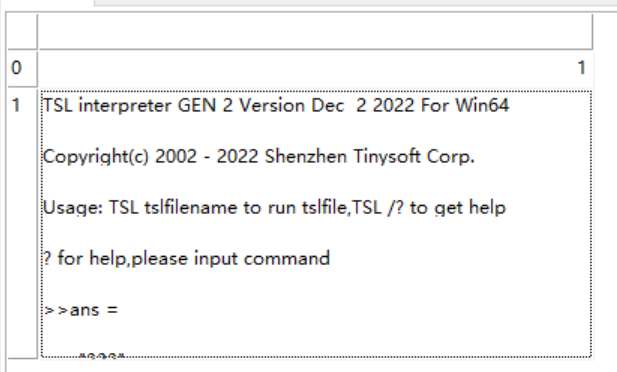天软金融分析.NET函数大全 > TSL函数 > 资源访问函数 > 进程相关函数
SysWaitForMultipleObjects
简述
等待占有多个对象,例如互斥对象。支持windows和linux的进程定义
SysWaitForMultipleObjects(Objects:Array of Integer;bWaitAll:Boolean;WaitMs:Integer):Ingeger;
参数
| 名称 | 类型 | 说明 | ||||||||||
|---|---|---|---|---|---|---|---|---|---|---|---|---|
| Objects | Array of Integer | 一维数字数组,对象句柄数组 | ||||||||||
| bWaitAll | Boolean | 真假,是否等待所有的对象。为真等待所有的,为假则仅需任意一个对象等待成功。 | ||||||||||
| WaitMs | Integer | 整数,等待的毫秒数,-1则为永远等待。 | ||||||||||
| 返回 | Ingeger | 返回值对应如下:
|
- 范例SysexecNewpipe(); //创建管道返回:返回为1,说明hand1没有等待成功,而至少hand2是有等待成功了。
path:="D:\\TinySoftNG\\AnalyseNG.NET\\TSL.exe";
doS1:=array('C:\\TinySoftNG\\AnalyseNG.NET\\tsl.exe','C:\\DoTSL\\otherTest\\TestEnv.tsl');
doS2:=array('C:\\TinySoftNG\\AnalyseNG.NET\\tsl.exe','C:\\DoTSL\\otherTest\\TestEcho.tsf');
//创建一个被挂起的进程,两个会返回的进程
hand1:= SysExec(path,'TSL',nil,array('wait':false,'in':'c:="333"\r\n'),code);
hand2:= SysExec(path,doS1,nil,false,code);
hand3:= SysExec(path,doS2,nil,false,code);
r:=SysWaitForMultipleObjects(array(hand1,hand2,hand3),0,10*1000);// 仅需任意一个对象等待成功
t:=SysexecReadpipe();//读取管道内容
SysTerminate(code,hand1);//终止进程
SysTerminate(code,hand2);//终止进程
SysTerminate(code,hand3);//终止进程
return array(r,t); 注:其中的TestEnv.tsl与TestEcho.tsf实现分别如下:TestEnv.tsl:sleep(500);t:=Sysgetenvs();echo "sys: ",tostn(t),'\r\n';return 1;TestEcho.tsf:sleep(2*1000);//停2秒echo 'TestEchoIN\r\n';return 1;SysExec、SysWaitForSingleObject参考
注:其中的TestEnv.tsl与TestEcho.tsf实现分别如下:TestEnv.tsl:sleep(500);t:=Sysgetenvs();echo "sys: ",tostn(t),'\r\n';return 1;TestEcho.tsf:sleep(2*1000);//停2秒echo 'TestEchoIN\r\n';return 1;SysExec、SysWaitForSingleObject参考
相关